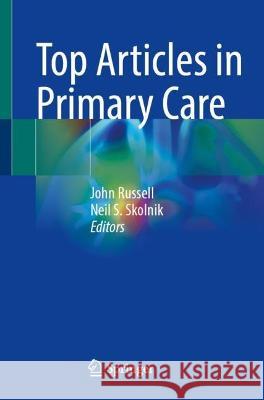Top Articles in Primary Care » książka
Top Articles in Primary Care
ISBN-13: 9783031256196 / Angielski
This book reviews, in one place, the breadth of articles that form the basis for the current practice of medicine. When physicians examine medical literature, there are articles that are quoted over and over again, as well as articles that have established the standards that are so embedded that we no longer think of where those standards came from. When clinicians treat patients with diabetes, why do we aim for an A1c less than 7%? That standard comes primarily from two trials, the DPPT and the UKPDS trial, both of which broke new ground when they were published. In addition, the ACCORD trial informed us that a lower A1c goal does not improve outcomes, and may in fact lead to worse outcomes. Understanding these trials helps physicians to make better decisions for their patients and gives them a greater appreciation for the information they work with every day.The chapters are organized by system such as respiratory, cardiovascular, diabetes, etc. and within each system, in the chronological order of publication. Each article reviewed includes a succinct overview of methodology and the results, followed by a discussion that puts the results into clinical context. All articles are selected and chapters written by primary care physicians who understand what is relevant to the intended audience for the book.Written by experts in the field,Top Articles Every Clinician Should Knowprovides readers with one source where information can be found about the most important articles published in the medical literature that informs the way clinicians practice primary care today.
This book reviews, in one place, the breadth of articles that form the basis for the current practice of medicine. When physicians examine medical literature, there are articles that are quoted over and over again, as well as articles that have established the standards that are so embedded that we no longer think of where those standards came from. When clinicians treat patients with diabetes, why do we aim for an A1c less than 7%? That standard comes primarily from two trials, the DPPT and the UKPDS trial, both of which broke new ground when they were published. In addition, the ACCORD trial informed us that a lower A1c goal does not improve outcomes, and may in fact lead to worse outcomes. Understanding these trials helps physicians to make better decisions for their patients and gives them a greater appreciation for the information they work with every day.The chapters are organized by system such as respiratory, cardiovascular, diabetes, etc. and within each system, in the chronological order of publication. Each article reviewed includes a succinct overview of methodology and the results, followed by a discussion that puts the results into clinical context. All articles are selected and chapters written by primary care physicians who understand what is relevant to the intended audience for the book. Written by experts in the field, Top Articles Every Clinician Should Know provides readers with one source where information can be found about the most important articles published in the medical literature that informs the way clinicians practice primary care today.











